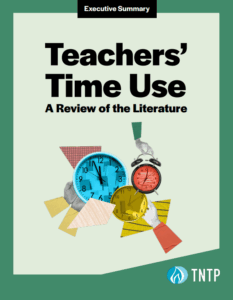In large, urban school districts, every spring brings the same anxiety to teachers: Will I have a job next year?
In most large districts with shifting student enrollment, school-year budgets are unpredictable, so districts cut some teaching positions in the spring in anticipation of serving fewer students the next school year. In some districts, teachers worry that they’ll find themselves in the “surplus teacher pool.” In others, they’re at risk for getting a pink slip. But inevitably, some teachers will be told that their current jobs are on the chopping block, only to be possibly rehired by the same school or another one in the district a few months down the line.
It sounds like a ridiculous problem—but it’s one that can be minimized, with a focus on the right strategies.
Typically, districts cut more teaching positions than is actually necessary, just to play it safe. In California, for example, an estimated 75 percent of pink-slipped teachers are rehired by the fall—often back in their original schools. In other cases, vacancies will open up in other schools within the same district and teachers will shuffle around, finding new jobs at new schools with new students.
It’s a chaotic process, and nobody likes it. As one principal told me, “There’s nothing worse than losing a great teacher you want, and who wants to stay at your school, because a position gets eliminated.” Shifting teachers around from school to school creates a cascade of destabilization—particularly in the high-need schools that often lose the most positions. And telling teachers they’re effectively losing their jobs—but that they might or might not be rehired months later—is a huge stressor that can push talented teachers into wealthier school districts or out of the profession altogether.
While stabilizing school budgets, especially in districts with fluctuating student enrollment, is hardly a quick fix, here are three strategies that districts can implement to help minimize the impact of this process on teachers, administrators and, most importantly, students:
Eliminate quality-blind staffing decisions: Often at the behest of state laws, many districts let go of the least senior teacher first, even if that teacher is the Teacher of the Year. Rather than use seniority as the sole means for staffing decisions, districts should factor in effectiveness ratings in determining which teachers are retained, and give principals more autonomy over the teachers they believe are the right fit for their schools. This practice protects the teachers who are having the greatest impact on student growth, and ensures that principals, who are ultimately held accountable for their schools’ performance, have input into changes to their staff rosters.
Create a rolling system for rehiring teachers. Typically, districts allocate teacher positions based on student enrollment projections in the spring, then adjust those allocations based on the actual number of students enrolled in the fall—often not until the 40th day of the school year. Too often, this means that a principal is told she’s losing a position, only to have that position reinstated in October, after a teacher has already been lost. Districts call these ‘staffing adjustments,’ and make them for all schools at the same time. But some schools have larger than expected enrollment right from the first day of the school year. In cases like these, classrooms are left with long-term substitutes until the standard adjustment date rolls around, often weeks later.
It’s not ideal for districts to let teachers go and then rehire them—but it’s even more ridiculous to hold off on those rehires any longer than necessary. Rather than wait until the 40th day to make adjustments for all schools, districts should allow schools to regain and fill positions as soon as it becomes clear that their enrollment projections were too low. If the district is more nimble in giving back teaching positions, principals will be better able to rehire the teachers they lost in the spring, or at least have a larger pool of teachers to hire from to ensure a good fit for their schools.
Provide a menu of supports to teachers. Inevitably, some teachers will need to be moved around. But when this happens, and teachers are in limbo, the worst thing a district can do is leave them to deal with the situation alone. It’s in a district’s best interest to retain as many effective teachers as possible, and this means standing shoulder to shoulder with teachers when they’re facing uncertainty. To do this, districts should implement an array of supports to help effective teachers secure new positions quickly. Clear and regular communication about teachers’ options and the rehiring process is critical. Hiring fairs, regular updates on local vacancies and hands-on assistance with completing transfer applications all show teachers that they’re valued, even during a tumultuous time. If there are highly effective teachers on the surplus list, the district should go as far as to pair the teacher with a human resources staff member who can provide one-on-one support during the spring and summer hiring seasons.
*
The springtime teacher shuffle isn’t just an absurdity for teachers. It’s also bad for kids—particularly students in high-poverty schools, who are most in need of stable populations of great teachers and who are often hit hardest by the shuffle. As it stands, the process fails to protect effective teachers from losing their jobs, and it throws yet another challenge on the plates of principals, teachers and families who are working hard to create strong, engaged school communities.
While the need to shift teaching positions around year to year may never go away completely, districts can and should focus more resources on minimizing the negative impact this process has on the teachers—and school communities—who are caught in the middle.








